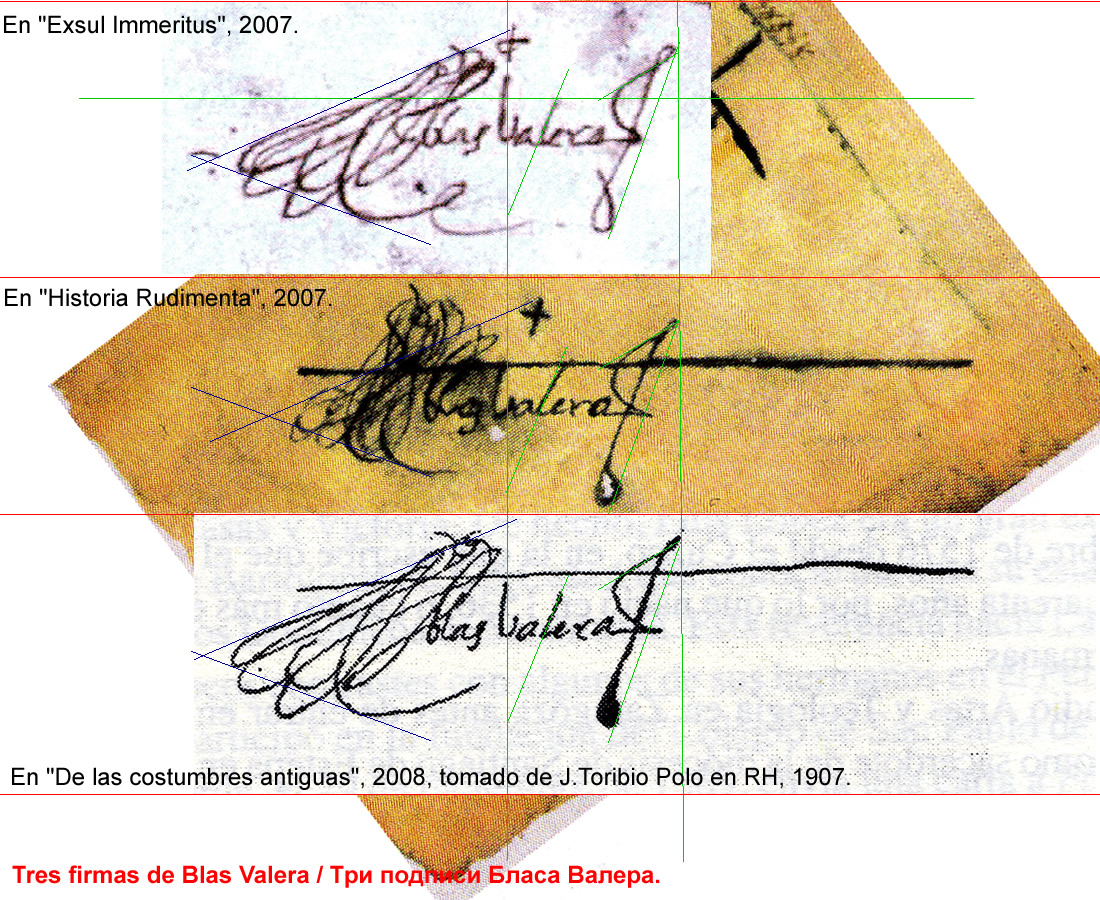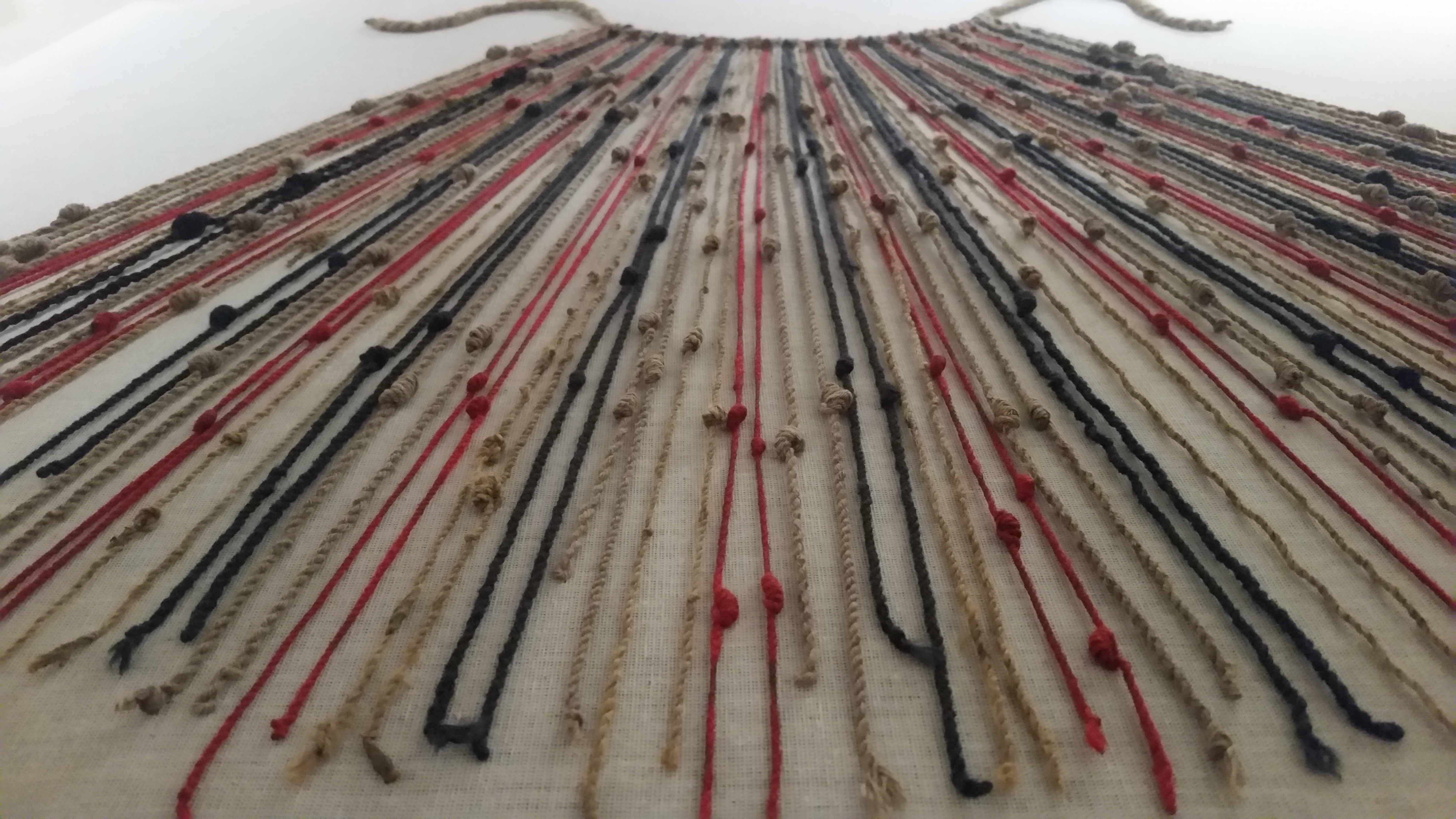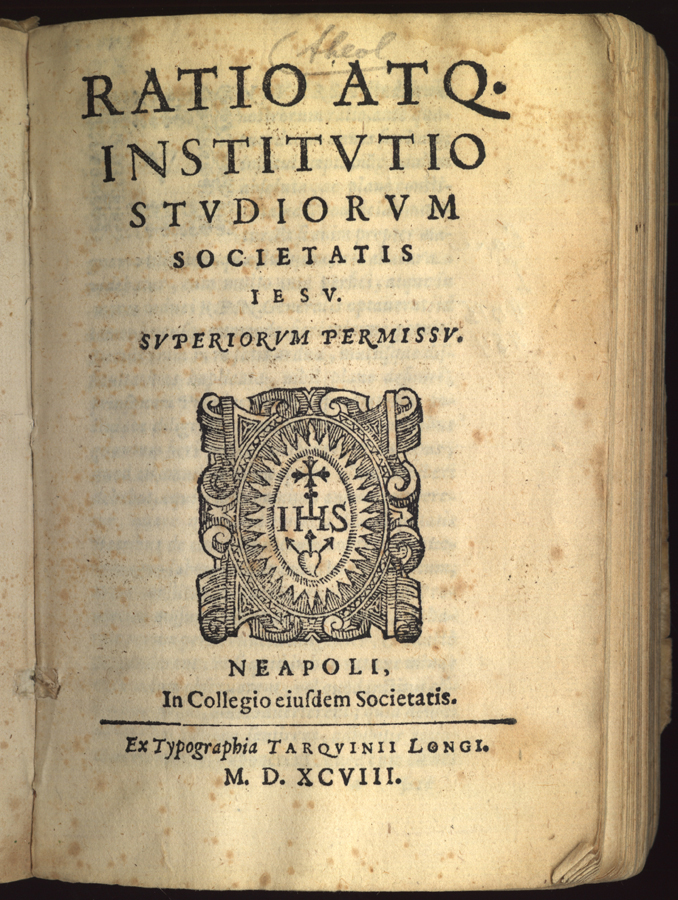|
Blas Valera
Blas Valera (1544-1597) was a Roman Catholic priest of the Jesuit Order in Peru, a historian, and a linguist. The son of a Spaniard and an indigenous woman, he was one of the first mestizo priests in Peru. He wrote a history of Peru titled ''Historia Occidentalis'' which is mostly lost, although the Inca Garcilaso de la Vega quoted some of it in his history. In 1583 Valera was jailed by the Jesuits. The Jesuits claimed they were punishing Valera for sexual misconduct but more likely the reason was heresy. Valera's writings claimed the Incas were the legitimate rulers of Peru, the Inca's language, Quechua, was equal to Latin as the language of religion, and the Inca religion had prepared the Andean peoples for Christianity. In 1596, still under house arrest, he traveled to Spain. He died there in 1597. In the words of biographer Sabine Hyland, Blas had "concern for the welfare of the indigenous people of Peru" and he made "courageous efforts to defend their civilization and for ... [...More Info...] [...Related Items...] OR: [Wikipedia] [Google] [Baidu] |
Catechism
A catechism (; from grc, κατηχέω, "to teach orally") is a summary or exposition of doctrine and serves as a learning introduction to the Sacraments traditionally used in catechesis, or Christian religious teaching of children and adult converts. Catechisms are doctrinal manuals – often in the form of questions followed by answers to be memorised – a format #Secular catechisms, that has been used in non-religious or secular contexts as well. According to Norman DeWitt, the early Christians appropriated this practice from the Epicureans, a school whose founder Epicurus had instructed to keep summaries of the teachings for easy learning. The term ''catechumen'' refers to the designated recipient of the catechetical work or instruction. In the Catholic Church, catechumens are those who are preparing to receive the Sacraments of the Catholic Church, Sacrament of Baptism. Traditionally, they would be placed separately during Holy Mass from those who had been baptized, and wo ... [...More Info...] [...Related Items...] OR: [Wikipedia] [Google] [Baidu] |
Chroniclers
A chronicle ( la, chronica, from Greek ''chroniká'', from , ''chrónos'' – "time") is a historical account of events arranged in chronological order, as in a timeline. Typically, equal weight is given for historically important events and local events, the purpose being the recording of events that occurred, seen from the perspective of the chronicler. A chronicle which traces world history is a universal chronicle. This is in contrast to a narrative or history, in which an author chooses events to interpret and analyze and excludes those the author does not consider important or relevant. The information sources for chronicles vary. Some are written from the chronicler's direct knowledge, others from witnesses or participants in events, still others are accounts passed down from generation to generation by oral tradition.Elisabeth M. C. Van Houts, ''Memory and Gender in Medieval Europe: 900–1200'' (Toronto; Buffalo : University of Toronto Press, 1999), pp. 19–20. Some ... [...More Info...] [...Related Items...] OR: [Wikipedia] [Google] [Baidu] |
Atahuallpa
Atahualpa (), also Atawallpa (Quechua), Atabalica, Atahuallpa, Atabalipa (c. 1502 – 26-29 July 1533) was the last Inca Emperor. After defeating his brother, Atahualpa became very briefly the last Sapa Inca (sovereign emperor) of the Inca Empire (Tawantinsuyu) before the Spanish conquest ended his reign. Before the Inca Emperor Huayna Capac died in Quito in 1524 (possibly assassinated by the Spanish to claim the treasures or rumored to have died from smallpox, a disease brought by Europeans), he had appointed his son Ninan Cuyochi as his successor. Ninan died of the same disease. Huáscar, another son of Huayna, was named Sapa Inca by the Cusquenian nobles and he appointed his brother Atahualpa as governor of Quito. The Inca Civil War began in 1529 when Huáscar declared war on Atahualpa, for fear that he would try to carry out a coup d'état against him. Atahualpa became Inca emperor in May 1532 after he had defeated and imprisoned Huáscar and massacred any pretenders to the t ... [...More Info...] [...Related Items...] OR: [Wikipedia] [Google] [Baidu] |
Quipu
''Quipu'' (also spelled ''khipu'') are recording devices fashioned from strings historically used by a number of cultures in the region of Andean South America. A ''quipu'' usually consisted of cotton or camelid fiber strings. The Inca people used them for collecting data and keeping records, monitoring tax obligations, collecting census records, calendrical information, and for military organization. The cords stored numeric and other values encoded as knots, often in a base ten positional system. A ''quipu'' could have only a few or thousands of cords. The configuration of the ''quipus'' has been "compared to string mops." Archaeological evidence has also shown the use of finely carved wood as a supplemental, and perhaps sturdier, base to which the color-coded cords would be attached. A relatively small number have survived. Objects that can be identified unambiguously as ''quipus'' first appear in the archaeological record in the first millennium AD (though debated quipus ar ... [...More Info...] [...Related Items...] OR: [Wikipedia] [Google] [Baidu] |
Guaman Poma
Felipe Guaman Poma de Ayala (ca. 1535Fane, 165 – after 1616), also known as Huamán Poma or Wamán Poma, was a Quechua nobleman known for chronicling and denouncing the ill treatment of the natives of the Andes by the Spanish after their conquest.Adorno, RolenaFelipe Guamán Poma de Ayala’s ''Nueva crónica y buen gobierno'' (''New Chronicle and Good Government'').''Early Ibero/Ango Americanist Summit: New World Antiquities and Histories.'' (retrieved 8 Sept 2009) Today, Guamán Poma is noted for his illustrated chronicle, '' Nueva corónica y buen gobierno''.Fane, 166 Biography The son of a noble family from the central southern Peruvian province of Lucanas located in the modern day department of Ayacucho, he was a direct descendant of the eminent indigenous conqueror and ruler Huaman-Chava-Ayauca Yarovilca-Huanuco,Hamilton, RolandTable of Contents and Excerpt, Guaman Poma de Ayala, the First New Chronicle and Good Government.''University of Texas Press.'' 2009 (retriev ... [...More Info...] [...Related Items...] OR: [Wikipedia] [Google] [Baidu] |
Quito
Quito (; qu, Kitu), formally San Francisco de Quito, is the capital and largest city of Ecuador, with an estimated population of 2.8 million in its urban area. It is also the capital of the province of Pichincha. Quito is located in a valley on the eastern slopes of Pichincha, an active stratovolcano in the Andes, at an elevation of , making it the second-highest capital city in the world.Contact Us " TAME. Retrieved on 14 March 2010. Quito is the political and cultural center of Ecuador as the country's major governmental, administrative, and cultural institutions are located within the city. The majority of transnational companies with a presence in Ecuador are headquartered there. It is also one of the country's two major industrial centers—the port city of |
Claudio Acquaviva
Claudio Acquaviva, SJ (14 September 1543 – 31 January 1615) was an Italian Jesuit priest. Elected in 1581 as the fifth Superior General of the Society of Jesus, he has been referred to as the second founder of the Jesuit order. Early life and family Claudio Acquaviva was born in Atri, Abruzzo, the son of Giovanni Antonio Acquaviva d'Aragona, 9th Duke of Atri, descended from a noble family illustrious at the court of Naples for its patronage of humanist culture. His grandfather, Andrea Matteo Acquaviva (1456–1528), was a ''condottiere'' and humanist whose brother Belisario Acquaviva (1464–1528), Duke of Nardo, was also a noted man of letters. Some older texts, including those illustrated in this article, spell his name ''Aquaviva''. After initial studies of humanities (Latin, Greek and Hebrew) and Mathematics, he studied Jurisprudence in Perugia. He had heard of the Society of Jesus through his friendship with Francis Borgia and Juan de Polanco. He was particularly impr ... [...More Info...] [...Related Items...] OR: [Wikipedia] [Google] [Baidu] |
Francisco Pizzaro
Francisco Pizarro González, Marquess of the Atabillos (; ; – 26 June 1541) was a Spanish conquistador, best known for his expeditions that led to the Spanish conquest of Peru. Born in Trujillo, Spain to a poor family, Pizarro chose to pursue fortune and adventure in the New World. He went to the Gulf of Urabá, and accompanied Vasco Núñez de Balboa in his crossing of the Isthmus of Panama, where they became the first Europeans to see the Pacific Ocean from the Americas. He served as mayor of the newly founded Panama City for a few years and undertook two failed expeditions to Peru. In 1529, Pizarro obtained permission from the Spanish crown to lead a campaign to conquer Peru and went on his third, and successful, expedition. When local people who lived along the coast resisted this invasion, Pizarro moved inland and founded the first Spanish settlement in Peru, San Miguel de Piura. After a series of manoeuvres, Pizarro captured the Incan emperor Atahualpa at the ... [...More Info...] [...Related Items...] OR: [Wikipedia] [Google] [Baidu] |
Francisco De Toledo
Francisco Álvarez de Toledo ( Oropesa, 10 July 1515 – Escalona, 21 April 1582), also known as ''The Viceroyal Solon'', was an aristocrat and soldier of the Kingdom of Spain and the fifth Viceroy of Peru. Often regarded as the "best of Peru's viceroys", he is as often denounced for the negative impact his administration had on the Indigenous peoples of Peru. Toledo brought stability to a tumultuous viceroyalty of Spain and enacted administrative reforms which changed the character of Spanish colonial rule and the relationship between the Indigenous peoples of the Andes and their Spanish overlords. With a policy called "reductions", Toledo forcibly relocated much of the Indigenous peoples of Peru and Bolivia into new settlements in order to enforce their Christianization, collect tributes and taxes, and gather Indigenous labor to work in mines and other Spanish enterprises. He has been condemned for the reductions, expanding the forced labor demanded of the Indigenous peop ... [...More Info...] [...Related Items...] OR: [Wikipedia] [Google] [Baidu] |
Philip II Of Spain
Philip II) in Spain, while in Portugal and his Italian kingdoms he ruled as Philip I ( pt, Filipe I). (21 May 152713 September 1598), also known as Philip the Prudent ( es, Felipe el Prudente), was King of Spain from 1556, King of Portugal from 1580, and King of Naples and Sicily from 1554 until his death in 1598. He was '' jure uxoris'' King of England and Ireland from his marriage to Queen Mary I in 1554 until her death in 1558. He was also Duke of Milan from 1540. From 1555, he was Lord of the Seventeen Provinces of the Netherlands. The son of Emperor Charles V and Isabella of Portugal, Philip inherited his father's Spanish Empire in 1556 and succeeded to the Portuguese throne in 1580 following a dynastic crisis. The Spanish conquests of the Inca Empire and of the Philippines, named in his honor by Ruy López de Villalobos, were completed during his reign. Under Philip II, Spain reached the height of its influence and power, sometimes called the Spanish Golden Age, and r ... [...More Info...] [...Related Items...] OR: [Wikipedia] [Google] [Baidu] |


.jpg)






